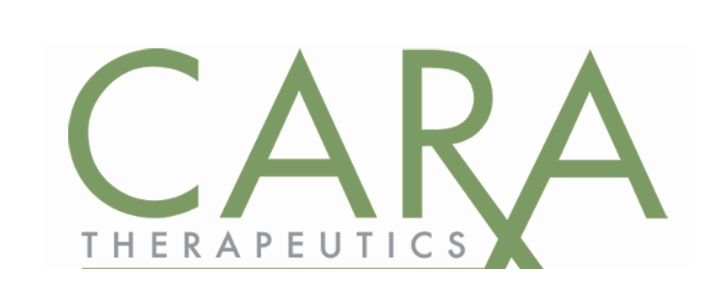
When markets opened in the US on Monday morning, Cara Therapeutics Inc (NASDAQ:CARA) traded for a little over $15. Premarket on Thursday, and throughout Thursday’s session, we saw high-volume and a spike to intraday highs just shy of $22 flat. We closed the day around $19, and it looks as though we’re going to get further gains today. All said, after a 30% up spike, we settled on around 25% gains in a little over 24 hours. The gains were rooted in a press release put out by Cara therapeutics premarket on Thursday, offering a taste of its topline results from one of its currently pipeline candidates – CR845. Markets translated the results as overwhelmingly positive, and expect Cara to now take its candidate into a phase III pivotal trial. However, as always, phase II success far from guarantees FDA approval, and further to that, FDA approval far from guarantees marketing success. So, with this said, is the 30% gain warranted? In addition, should we expect further gains based on this latest result, or have short-term speculative biotech traders missed the boat? To answer, let’s take a look at the treatment itself, how it performed in the latest trial, and what we could be looking at from a market potential perspective if the treatment is successful in its planned phase III.
So, first, let’s address the science. As part of the latest trials, Cara tested CR845 inpatients suffering from uremic pruritus – a chronic itch condition associated with sufferers of end-stage renal disease. The condition manifests itself as a skin condition, and does not associate itself with any particular gender, age, ethnicity or root cause of renal failure – presenting Cara with a relatively wide subject base in its trial. The treatment is what we might call an alternative take on current opioid analgesics such as morphine and oxycodone. These aforementioned have a mechanism of action that allows them to activate fresh opioid receptors in the central nervous system, essentially tricking the brain into overlooking pain signals from a particular area of the body. CR845, on the other hand, is a periphery treatment – in that it binds to opioid receptors at a specific target, but does not enter the central nervous system. For this reason, it does not affect the brain in the same way that traditional opioid analgesics do, which translates to a similar efficacy with a huge reduction in adverse effects. In the US, opioid analgesic abuse has reached epidemic levels, and Cara therapeutics believes periphery opioid analgesics such as CR845 can overcome this epidemic. Sounds interesting, right? Essentially, you can think of it as nonaddictive morphine.
So how did it perform in trials? Well, as we said in the introduction, we only have a taste of the topline results so far. However, this is enough to suggest a phase 3 pivotal could well be just round the corner. In the double-blind, randomized, placebo-controlled trial we saw a 54% greater reduction in worst itch sores for patients treated with CR845 than those receiving placebo – in other words, primary endpoint met. From a secondary endpoint perspective, the company allocated what’s called a Skindex score to patients receiving the treatment, which is essentially a baseline measure of improvement in dermatological conditions. In the trial, those treated with the drug experienced a 71% greater reduction in average total Skindex score over a two-week treatment period than those receiving placebo (for reference, a reduction is positive when it comes to Skindex). Finally, CR845 came out safe, well tolerated and did not demonstrate any serious adverse events. The only real side-effects were transient numbness (essentially numbness at point of injection) and a little bit of dizziness. Most importantly, there were no central nervous system associated side-effects, which had been the scourge of central acting opioid analgesics in the past.
So what is the market potential? This is a first in class treatment, meaning that we have very little to compare it to when it comes to price point. However, from a volume perspective, if Cara Therapeutics can achieve approval for CR845 it would be able to price the drug relatively cheaply and still generate significant revenues from its delivery. There are approximately 400,000 people in the US that suffer from renal disease, with about 50% of these experiencing uremic pruritus. On a global scale, we are looking at 2.2 million renal disease sufferers with, once again, about a 50% incidence rate of uremic pruritus.
So what’s the takeaway here? Well, Cara expects to initiate a phase III trial early next year, and if results mimic those with seen in the recent phase II, this treatment has the potential to be a real blockbuster for the company. The gains look valid, therefore, but from a big picture perspective, they look to be just a drop in the ocean of what could potentially be a game changing treatment. As mentioned, opioid analgesic addiction is a real problem in the US and globally, and if Cara can demonstrate efficacy and marketability for CR845 we could see the treatment start to replace morphine in a wide range of indications. In other words, longer-term, this could be a real winner. Cara is not quite in the league of its pharma mega cap counterparts such as Pfizer Inc. (NYSE:PFE) and GlaxoSmithKline plc (ADR) (NYSE:GSK), but a winner like this has the potential to elevate it a step closer.
More stories from Market Exclusive:
What Is the Real Cost of AstraZeneca’s Eye Cancer Flop?
Phase III Success Makes this Company a Potential Blockbuster Biotech




